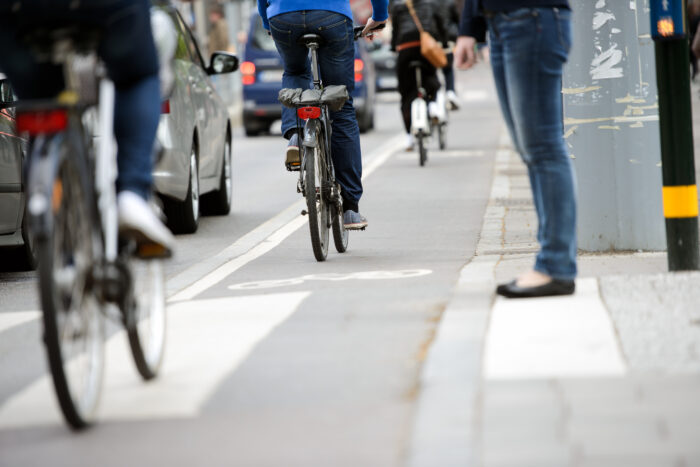Why Safe Cycling Matters
May 19, 2016

Knowing the rules can save your life.
Bicycles and cyclists account for almost half the traffic on the street and they should ensure they are doing everything they can to protect themselves.
As the temperature increases, so does the number of bicycles on the road, and unfortunately, so does the number of cycling accidents. Every year in Canada, more than 7,500 cyclists suffer serious injuries. According to the Brain Injury Society of Toronto, head injuries account for 20-40% of all cycling-related injuries treated in Canadian emergency departments each year.
“Currently, cyclists, pedestrians and drivers maintain an adversarial relationship on city streets, and this relationship unfortunately leads to collisions,” says Constable Clinton Stibbe, Traffic Services Media Officer for the Toronto Police Service. “Too often we see road users taking shortcuts and these shortcuts are costing lives. Cyclists and pedestrians are the most vulnerable road using group. They must be aware of all situations they face, and at the same time, they must take all steps necessary to help protect themselves, which includes following all the rules of the road at all times.”
Under Ontario’s Highway Traffic Act (HTA), a bicycle is a vehicle, just like a car or truck. Cyclists must obey all traffic laws and have the same rights and responsibilities as drivers. Drivers must also be aware that they are sharing the road with cyclists. For example, drivers need to check when turning to ensure no cyclists are in their blind spot. Drivers must give at least a meter of distance when passing a cyclist, and always check before opening a car door.
“I used to ride my bicycle all the time, until I was hit by a car last year,” says Rebecca a 32 year old cycling accident victim who asked to remain anonymous. The driver of the car was making a left-hand turn and was not looking to see if a bicycle was in her blind spot. “The car t-boned me and I was left with severe damage; short-term memory loss, a fractured spine and permanent nerve damage,” she adds.
Cyclists riding on the roadways are vulnerable to serious injury because, other than wearing a helmet, they are completely exposed to an impact from a motor vehicle. Even an approved helmet may be insufficient to protect a cyclist from sustaining a serious head injury. Bicycle accidents frequently occur when cyclists try to avoid motor vehicles that are unaware of the cyclist’s presence on the roadway.
“The injury cases we handle involving cyclists who have been struck by a motor vehicle, or where a person is injured attempting to avoid a vehicle, generally involve serious and often “catastrophic” injuries,” says Leonard Kunka, a partner with the personal injury law firm of Thomson Rogers. “Many cyclists are unaware of their legal rights following an accident, and the process for making claims is complicated. While motor vehicle/cyclist accidents can often be quite terrifying, the insurance and legal process should not be.”
Thomson Rogers offers an Information Kit for cyclists that has ten steps to follow when you have been injured in a cycling accident.
- Get immediate medical attention after an accident.
- Ensure the police have all of the information they need about the accident.
- Record the names and addresses of all parties involved and witnesses. Record the car insurance information of any other party involved in the accident.
- See your family doctor and keep him/her informed of your injury.
- Notify your car insurance company within seven days of the accident if you own a motor vehicle and intend to pursue a claim for accident benefits.
- If you do not have car insurance, notify the insurer of the car that struck you immediately.
- Record the names and contact information of all health care professionals who treat you and all family members who cared for you (including dates and time spent).
- Keep receipts for all related expenses.
- Check for other insurance coverage (work, school or private plans).
- Contact a lawyer and explore your rights.
To get a copy of the Information Kit (and other helpful information on Safe Cycling) free of charge from Thomson Rogers, call personal injury lawyer Leonard Kunka at 416-868-3100.
It is important for everyone on the road to feel that they are safe. The knowledge of what to do in and after an accident is just as important as how to be safe when cycling.
Thomson Rogers is the largest personal injury law firm in Ontario and is also a leader in family law litigation, class actions, commercial litigation, planning, and municipal litigation.
_____________
[1] Now Toronto
Share this





